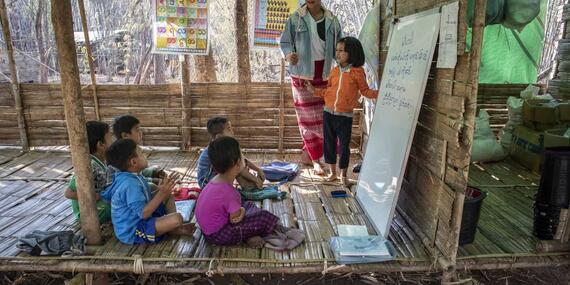Today's top news: Myanmar, Türkiye

Myanmar
Aid workers continue to provide assistance in the Sagaing region, and that’s despite the challenging context and access constraints.
More broadly, the conflict is compounding humanitarian needs and driving up the price of food, fuel and other basic items in Myanmar. Some 17.6 million people need in the country need humanitarian assistance, and more than 1.8 million people are now displaced.
We and our humanitarian partners continue to deliver aid where we have access – though active conflict and bureaucratic impediments have made those efforts more difficult. In 2022, with the help of local partners, we reached 4.4 million people with humanitarian assistance.
We aim to reach 4.5 million people through this year’s Humanitarian Response Plan – but to do so, we urgently need more support. Our $764 million appeal is just 9 per cent funded so far.
Türkiye
In Ankara today, the UN Resident and Humanitarian Coordinator, Alvaro Rodriguez, spoke to Member States, including donors to our $1 billion Flash Appeal, which is 29 per cent funded as of today.
Thanks to the funds raised, the UN and our humanitarian partners have reached nearly 770,000 people with tents and other shelter supplies. Every day, 2.3 million people are receiving hot meals.
More than a million people in the earthquake zone have gotten water, sanitation and hygiene assistance. And more than 137,000 people have received protection services, including psychosocial support and legal counselling. Sexual and reproductive services have been provided for some 6,800 people, and more than 13,000 people have received dignity and maternity kits.
We and our partners are also supporting the restoration of more than 1,200 damaged schools, and 87 tents have been installed to serve as emergency education spaces for students.
